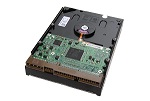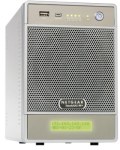 As some of you may be aware, I don’t put a whole lot of stock in the “SMART” feature of hard drives.
As some of you may be aware, I don’t put a whole lot of stock in the “SMART” feature of hard drives.
Rarely have I had the SMART capabilities of a hard drive actually tell me that the drive was going to fail.
Recently I had an encounter with SMART errors in a totally different way.
Basically, my ReadyNAS NV+ storage server was telling me that “Disk 1” was having problems and might fail soon … but all my tests indicated that the drives were fine.
After a lot of hassle, and going back and forth with Netgear support, I finally figured out the problem.
It started a few weeks ago with an email the ReadyNAS sent
Reallocated sector count has increased in the last day. Disk 1: Previous count: 671 Current count: 677 Growing SMART errors indicate a disk that may fail soon. If the errors continue to increase, you should be prepared to replace the disk.
The odd thing was, the SMART information on the drives, that was available via the ReadyNAS web interface, did not indicate any of the 4 drives currently installed had any reallocated sectors.
 For quite some time I haven’t been happy with the level of data protection on my servers … a while ago I ran mirrored (RAID 1) IDE (PATA) drives on my system using a Arco Duplidisk adapter. It seemed adequate, but after I upgraded my servers to the Dell PowerEdge systems, it didn’t seem to work quite right. It was reporting failed drives when there were none.
For quite some time I haven’t been happy with the level of data protection on my servers … a while ago I ran mirrored (RAID 1) IDE (PATA) drives on my system using a Arco Duplidisk adapter. It seemed adequate, but after I upgraded my servers to the Dell PowerEdge systems, it didn’t seem to work quite right. It was reporting failed drives when there were none.